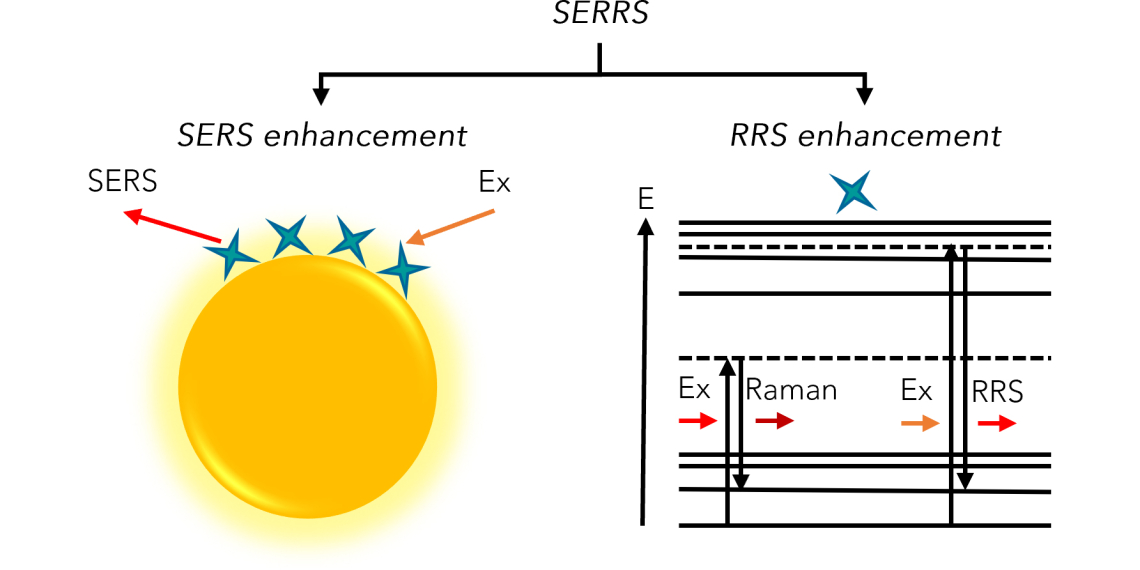
Surface-enhanced resonance Raman scattering (SERRS) is a technique that offers unparalleled sensitivity and specificity in non-destructive spectroscopic detection. It is a combination of surface-enhanced Raman scattering (SERS) and resonance Raman spectroscopy (RRS), two techniques that are individually used to overcome the inherent weakness of Raman scattering. SERRS occurs when an analyte, with an electronic transition frequency matching that of the excitation laser, is adsorbed on or near a roughened metal surface, such as that of a noble metal nanoparticle (NP). The theoretical Raman signal enhancements achievable using SERRS are orders of magnitude greater than SERS and RRS alone, meaning that analytes of interest can be detected at very low concentrations. The technique is becoming increasingly popular in the fields of medical diagnostics and food science and is applied primarily via labelling methods that couple resonant Raman reporters with bioconjugation moieties using optically tuneable nanoparticles. Such labelling methods can be applied to the detection of biomarkers in immunoassays, microfluidic devices and lateral flow testing, and when coupled with Raman microscopy, they can be utilised in the tracking of novel drugs or biomarkers in mammalian cells.

